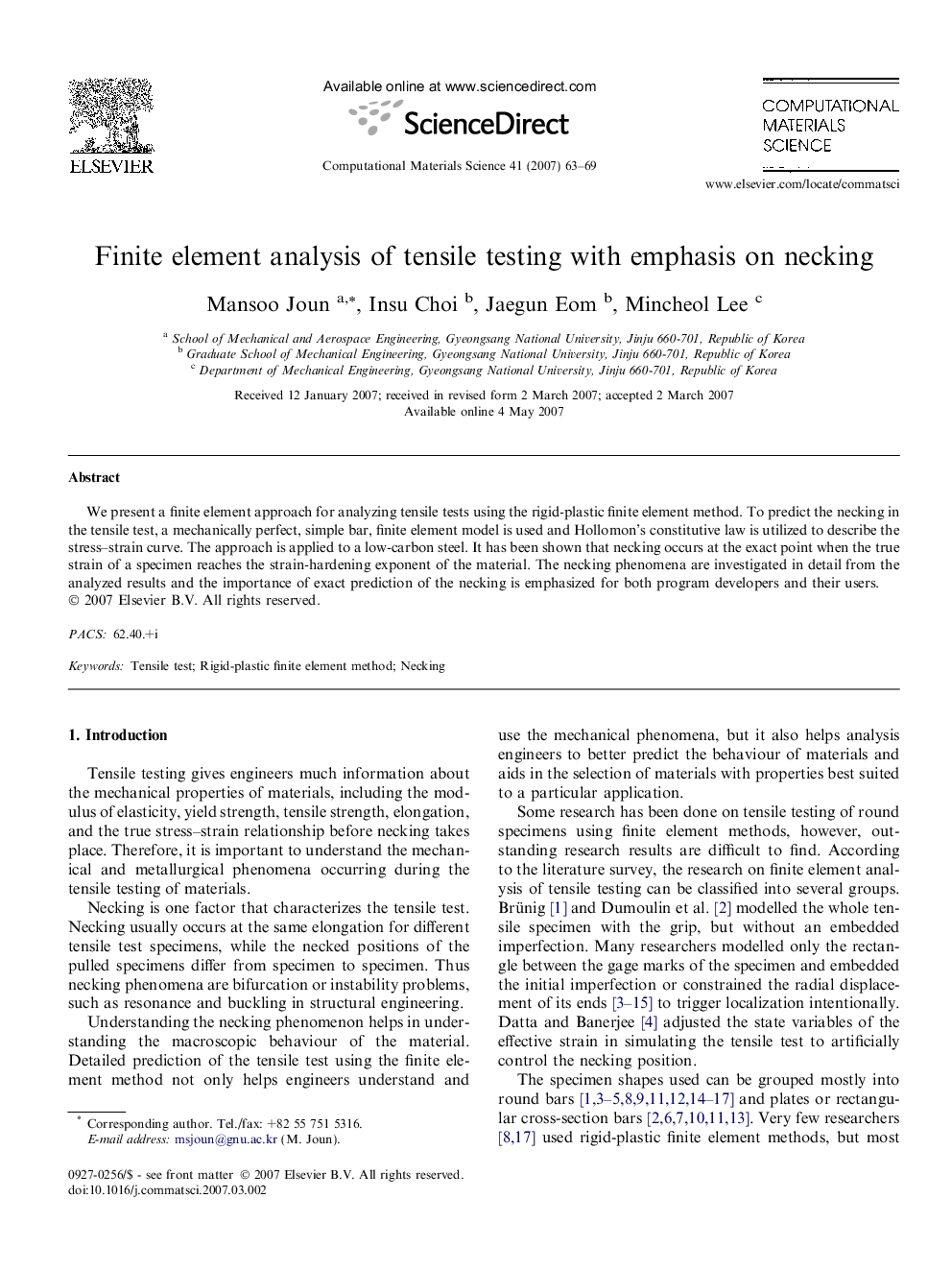| Article ID | Journal | Published Year | Pages | File Type |
|---|---|---|---|---|
| 1564366 | Computational Materials Science | 2007 | 7 Pages |
Abstract
We present a finite element approach for analyzing tensile tests using the rigid-plastic finite element method. To predict the necking in the tensile test, a mechanically perfect, simple bar, finite element model is used and Hollomon’s constitutive law is utilized to describe the stress–strain curve. The approach is applied to a low-carbon steel. It has been shown that necking occurs at the exact point when the true strain of a specimen reaches the strain-hardening exponent of the material. The necking phenomena are investigated in detail from the analyzed results and the importance of exact prediction of the necking is emphasized for both program developers and their users.
Related Topics
Physical Sciences and Engineering
Engineering
Computational Mechanics
Authors
Mansoo Joun, Insu Choi, Jaegun Eom, Mincheol Lee,
